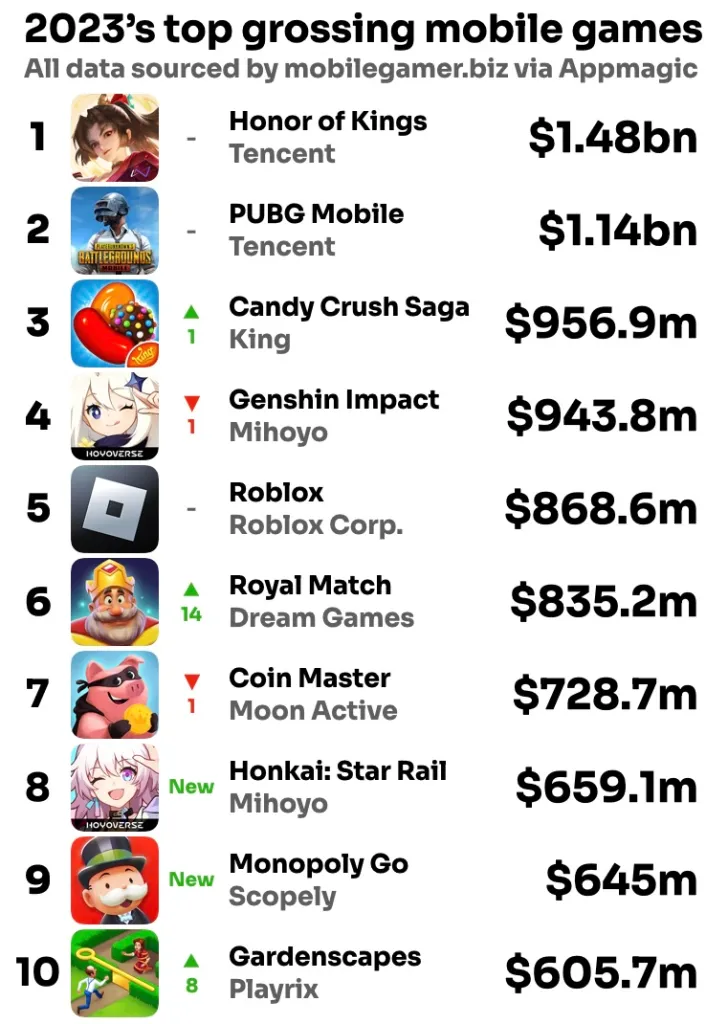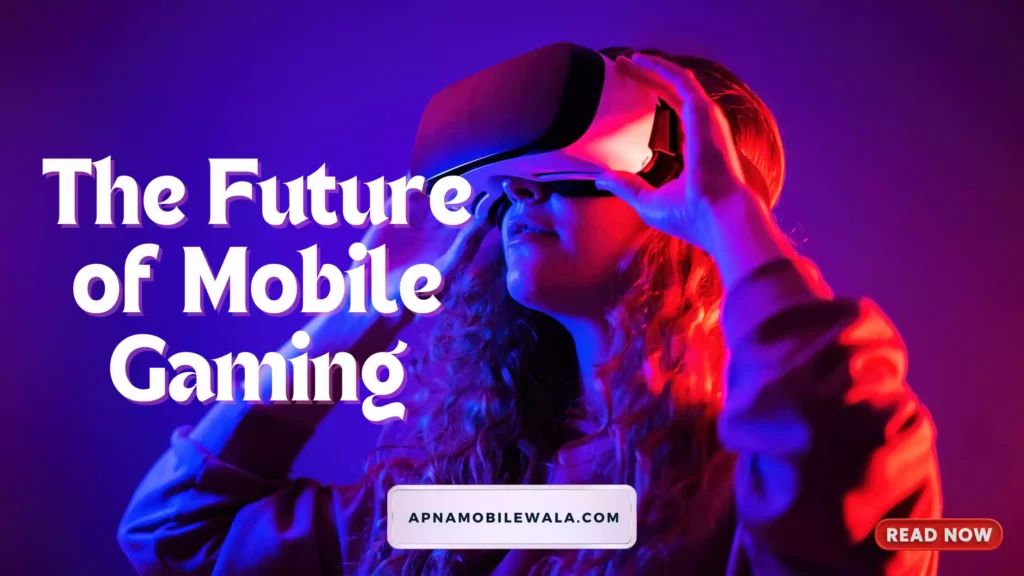Level Up Your Play: The Future of Mobile Gaming with AR, VR, and Hyper-Realism
Get ready to ditch the tiny screen and step into the game. The future of mobile gaming is hurtling towards us, powered by mind-blowing technologies like Augmented Reality (AR), Virtual Reality (VR), and hyper-realistic graphics. Buckle up, gamers, because the way we play on our phones is about to be revolutionized.
AR: Blurring the Lines Between Reality and Play
Imagine battling aliens in your living room, or solving puzzles that come alive on your coffee table. AR overlays digital elements in the real world, creating a whole new level of immersion. Mobile AR games are already popping up, like Pokemon Go, but the future holds even more exciting possibilities.
VR: Diving Headfirst into Virtual Worlds
VR takes you completely out of your surroundings and puts you right in the heart of the action. With a VR headset strapped on, you could be exploring a fantastical world, solving mysteries alongside your friends, or even attending a virtual concert. Mobile VR experiences are becoming more accessible, and with continued advancements, they’re poised to become a major player in the mobile gaming scene.
Hyper-Realistic Graphics: Feeling is Believing
Visuals are about to get a serious upgrade. Hyper-realistic graphics will push the boundaries of what’s possible on mobile devices, creating characters and environments so lifelike, that you’ll swear they’re real. Imagine exploring a lush jungle that feels like you could reach out and touch the leaves, or battling enemies that look and move with stunning realism.
Beyond the Tech: What Does it Mean for Us?
These advancements aren’t just about fancy graphics and cool gadgets. They’re about creating deeper connections with the games we love. AR and VR have the potential to foster a stronger sense of community, allowing us to play and explore alongside friends from all over the world. Hyper-realistic graphics will make storytelling even more immersive, drawing us into the narrative like never before.
The Future is Now (Almost)
There are still challenges to overcome. AR and VR require powerful processing capabilities, which can drain phone batteries. Additionally, VR headsets can be bulky and expensive. But as technology continues to develop, these hurdles will be cleared. The future of mobile gaming is bright, filled with endless possibilities for immersive, interactive experiences. So, get ready to level up your play, because the game is about to change.
Mobile Game Trends
Mobile Gaming Trends: Beyond the Hype
The mobile gaming industry is a dynamic beast, constantly evolving with new trends and player preferences. While the future holds promise for AR, VR, and hyper-realism, let’s explore some of the key trends shaping the mobile gaming landscape right now (in 2024):
1. Hybrid Games: The Best of Both Worlds
Hyper-casual games, known for their simplicity and short play sessions, are still popular. However, gamers are craving more depth. That’s where hybrid casual games come in. These titles combine the easy-to-learn mechanics of hyper-casual games with deeper features and monetization options from mid-core titles. Think engaging puzzles with RPG-like progression elements.
2. The Puzzle Persists:
Puzzle games have shown remarkable resilience, consistently ranking high in downloads. This isn’t surprising – they offer quick bursts of fun that challenge the mind and can be enjoyed by players of all ages. Expect to see innovative takes on classic puzzle mechanics and fresh twists on familiar genres.
3. Cross-Platform Play: Gaming Without Borders
The ability to play the same game with friends regardless of their device (phone, tablet, PC) is a growing trend. This not only increases user engagement but fosters a stronger sense of community.
4. Monetization Gets Strategic
The industry is moving away from a reliance solely on in-app purchases (IAPs). Hybrid monetization strategies are becoming the norm, with developers incorporating a variety of options like rewarded ads and subscriptions alongside IAPs. This caters to different player preferences and creates a more sustainable revenue stream.
5. The Rise of the Indies
Independent game developers are making their mark on the mobile market. With lower development costs and easier access to distribution platforms, indies are bringing fresh ideas and unique experiences to gamers.
Mobile game market size by Country
The mobile game market size varies significantly by country, influenced by factors like cultural preferences, disposable income, and smartphone penetration. Here’s a quick breakdown of the top players in 2023:
- China: The undisputed giant, boasting a market valued at over $40 billion. This is fueled by a large, tech-savvy population and a thriving domestic games industry.
- United States: Another major force, with a market size estimated around $25 billion. American gamers favor a variety of genres, from casual puzzle games to strategy titles.
- Japan: A mobile gaming powerhouse in Asia, valued at approximately $17 billion. The Japanese market has a strong affinity for RPGs (role-playing games) and gacha games (games that use a gashapon capsule toy mechanic).
- South Korea: A mobile gaming market on the rise, reaching around $6 billion in 2023. South Korea is known for its love of eSports (competitive gaming) and strategy games.
- India: The fastest growing mobile gaming market globally, with a value reaching about $6 billion. India’s large and young population, coupled with increasing smartphone affordability, is driving this growth.
It’s important to note that these are just estimates, and the market size can fluctuate year-to-year. To stay up-to-date on the latest figures, you can check reports from reputable market research firms like Newzoo, App Annie, and Sensor Tower.
Trend Mobile Games Moderator
The term “Trend Mobile Games Moderator” itself isn’t a single, established trend. However, it does touch on two interesting areas within mobile gaming trends:
- Community-Driven Content and Customization: There’s a growing interest in games that allow players to create and share their own content, or personalize their gaming experience. This could involve building levels, designing characters, or even creating entirely new game modes. While true “modding” on mobile games is less common due to technical limitations compared to PC games, some mobile titles offer limited in-game editors or marketplaces where players can share creations.
- Cloud Gaming and Increased Processing Power: Streaming games directly to your phone (cloud gaming) is a growing trend. This could allow for more complex games with advanced features like robust in-game editors, traditionally demanding for mobile devices. As cloud gaming and mobile processor power improve, we might see a rise in mobile games with more extensive customization options.
Here’s a breakdown of what “Trend Mobile Games Modeditor” might indicate:
- Interest in Player-Generated Content: Gamers are looking for ways to personalize their experience and potentially even influence the game itself.
- Demand for More Complex Mobile Games: Players might be craving a deeper level of engagement beyond basic gameplay mechanics.
- The Future of Mobile Gaming with Increased Processing Power: Advancements in cloud gaming and mobile processors could open doors for more sophisticated in-game editors on mobile platforms.
It’s important to note that while there isn’t a widespread trend of full-fledged mobile game modding tools yet, the ideas behind it reflect a growing desire for player involvement and deeper engagement in mobile gaming.
How many Mobile Games in the World
As of 2023, estimates suggest there are over 700,000 mobile games available worldwide across the two major app stores: Google Play Store and Apple App Store https://playtoday.co/blog/stats/. This number is constantly growing as new games are released every day.
Mobile Gaming Industry Statistics
The mobile gaming industry is a booming market with a massive user base and significant revenue generation. Here are some key statistics to paint a picture of its current state (as of May 2024):
Market Size and Revenue:
- Market Value: The global mobile gaming market was valued at an estimated $140.5 billion in 2022 [STATISTA]. Projections suggest it will surpass $173.4 billion by 2026 [STATISTA].
- Revenue Share: Mobile gaming accounts for roughly 51% of the total video game revenue worldwide [STATISTA].
Player Base and Engagement:
- Number of Players: There are an estimated 2.8 billion mobile gamers worldwide [Influencer Marketing Hub]. This number is expected to continue growing.
- Playing Time: With the rise of on-the-go entertainment, mobile games see high engagement, with players spending a significant amount of time on them.
Monetization:
- In-App Purchases (IAPs): IAPs remain a dominant monetization strategy, particularly for strategy and role-playing games [STATISTA].
- Advertising: In-app advertising is another major source of revenue, with developers offering rewarded video ads and other formats [Udonis].
- Subscription Models: Subscription-based games are gaining traction, providing access to exclusive content or ad-free experiences.
Trends:
- Hybrid Casual Games: These games combine the accessibility of hyper-casual games with deeper features and monetization options from mid-core titles [Udonis].
- Cloud Gaming: Streaming games directly to mobile devices is on the rise, potentially allowing for more complex games with advanced features [Udonis].
- Cross-Platform Play: The ability to play with friends regardless of their device is becoming increasingly common [Udonis].
- Rise of Indie Developers: Independent studios are making a bigger mark with innovative and unique mobile game experiences [Udonis].
Mobile Game Profit Margin
The profit margin for mobile games can vary greatly depending on several factors:
- Genre: RPGs (role-playing games) and strategy games tend to have higher profit margins than casual puzzle games, due to potentially more in-app purchases (IAPs) or longer player engagement leading to more ad revenue [Udonis].
- Monetization Strategy: Games with a mix of IAPs, rewarded ads, and subscriptions can potentially have higher margins than relying solely on IAPs [Udonis].
- Development Costs: The cost of developing the game will obviously impact profit margin.
Here’s a breakdown of some ballpark figures:
- Hyper-Casual Games: These often have low development costs but relatively low profit margins, typically around 10-15% [GamesIndustry.biz]. They rely heavily on volume and impressions from a large player base to generate ad revenue.
- Mid-Core Games: These titles can have a wider range of profit margins, potentially falling between 20% and 50% depending on the factors mentioned above.
- High-End Games: Games with sophisticated features or AAA titles might reach even higher margins, but success is not guaranteed due to the competitive landscape.
Important Caveats:
- It’s important to remember these are just estimates. A game’s profitability hinges on various factors beyond genre or monetization strategy. Marketing costs and user acquisition strategies also play a significant role.
- Breaking into the mobile gaming market is highly competitive. Many games struggle to achieve profitability at all.
Additional Resources:
- Why do mobile games cost so much?: https://medium.com/@cool.myll/free-vs-paid-mobile-games-17ce6a2f6c49
- How do mobile games make money?: https://www.blog.udonis.co/topics/mobile-marketing/mobile-games
Mobile Game Revenue Charts
Here are some mobile game revenue charts:
Top-grossing mobile games worldwide in 2023
This chart by Statista shows the most successful mobile games in 2023 based on estimated revenue. Here, we can see that the Honor of Kings reigned supreme, followed by PUBG Mobile and Genshin Impact.

Mobile game revenue by region
This Sensor Tower report provides a good breakdown of mobile game revenue by region. It’s important to note that this data is for January 2024, so figures may have changed throughout the year. Sensor Tower Mobile game revenue by region [invalid URL removed]
These are just a couple of examples, and there are many other resources available online that provide charts and data on the mobile game industry.
The Future of Games with VR
The Future is Now (Almost)
There are still challenges to overcome. AR and VR require powerful processing capabilities, which can drain phone batteries. Additionally, VR headsets can be bulky and expensive. But as technology continues to develop, these hurdles will be cleared. The future of mobile gaming is bright, filled with endless possibilities for immersive, interactive experiences. So, get ready to level up your play, because the game is about to change.
Thanks for Reading!
- How Will We Access Virtual Worlds on Our Phones?
- The Rise of the Subscription Phone
- Sony Xperia 1 VI Price and Review
- Realme 12 Pro Plus Review and Price
- OnePlus Nord CE4 Review and Price



